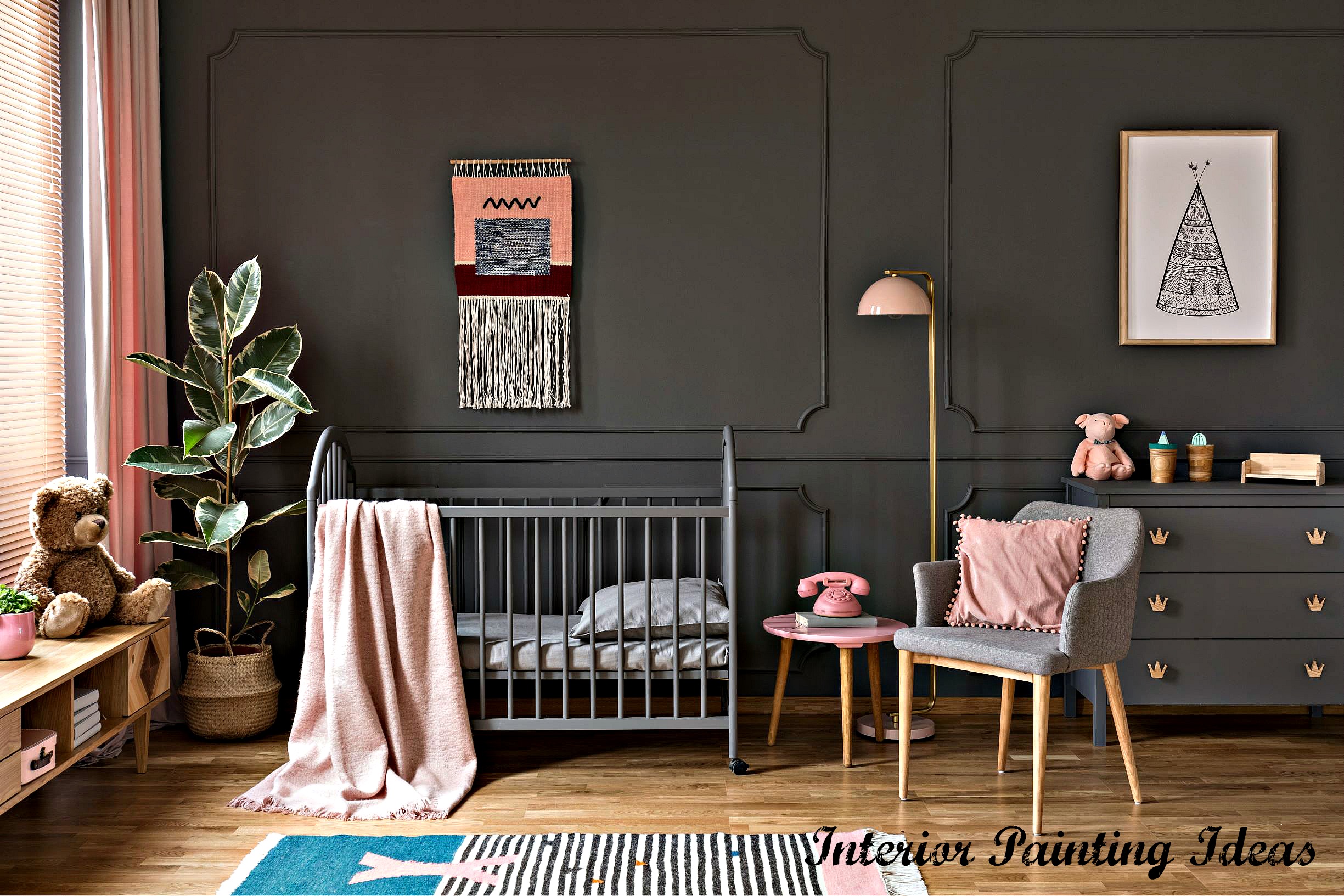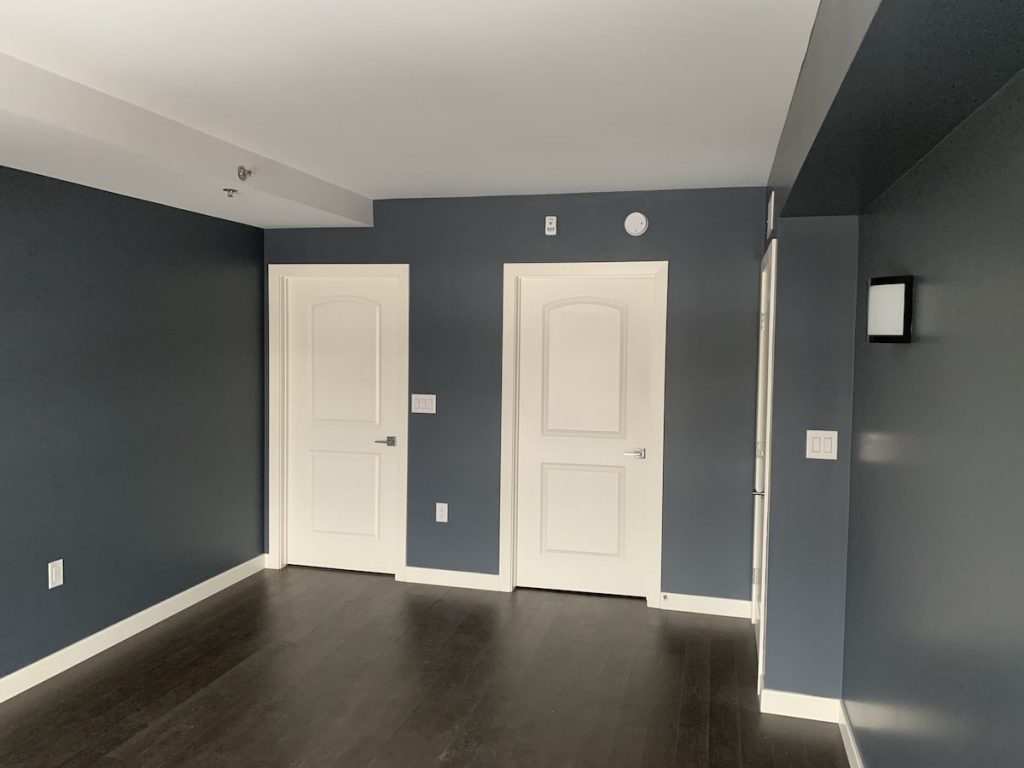Enhance Your Interior Style With Comprehensive Color Appointment
The assimilation of shade assessment right into interior decoration provides an unique possibility to fine-tune and elevate the emotional and aesthetic vibration of a room. By involving with a skilled color expert, you can browse the intricacies of shade selection, guaranteeing that your options not only complement architectural features however likewise reverberate with personal style and mental effect. This calculated collaboration can significantly affect the overall atmosphere of your environment, fostering a sense of harmony and purpose. Comprehending the nuances of this process is vital-- what key aspects should be considered to attain optimum outcomes?
Benefits of Shade Assessment

In addition, color assessment help in maximizing natural light and optimizing spatial assumption. Lighter hues can make a space appear more extensive, while darker tones produce an intimate setup. Cleveland Metro Painting Specialists. This strategic application of color can considerably influence the general setting of any kind of indoor space
Additionally, professional consultants possess an extensive understanding of current patterns and ageless classics, guaranteeing that the picked colors will remain appealing over time. This foresight can save clients from expensive redesigns in the future. Shade examination empowers clients by supplying them with a clear vision and direction, fostering confidence in their layout selections and ultimately leading to a much more effective and gratifying interior design end result.
Comprehending Color Psychology
The value of shade psychology in indoor layout can not be overstated, as it delves right into the emotional and emotional impacts that different hues can stimulate in individuals. Shades can influence state of mind, behavior, and also performance, making them a crucial factor to consider in any type of design job.
As an example, cozy colors such as red, orange, and yellow are usually related to power and warmth. They can boost feelings of enjoyment and convenience, making them appropriate for social rooms like living spaces or cooking areas. On the other hand, cool shades like blue, environment-friendly, and purple have a tendency to stimulate calmness and serenity, making them excellent for bedrooms or reflection areas.
Furthermore, using neutral tones can create a balanced setting by permitting the bolder colors to stand apart without frustrating the detects. Understanding these mental effects makes it possible for designers to produce areas that not just look aesthetically pleasing but likewise advertise psychological health.
Incorporating color psychology right into indoor layout involves a thoughtful selection of colors customized to the desired feature of each space, ultimately enhancing the general experience for its residents. This recognition is crucial for achieving a functional and unified interior environment.
The Shade Wheel Discussed
Understanding the relationships between hues is vital for efficient interior decoration, and the color wheel works as a valuable tool in this process. The shade wheel, created by Isaac Newton in the 17th century, highlights the range of shades prepared in a round style. It makes up main shades-- red, blue, and yellow-- that can not be developed by blending various other colors. Secondary colors, created by incorporating primaries, consist of environment-friendly, orange, and purple. Tertiary shades result from mixing a key and an additional shade, causing tones such as red-orange and green.
The shade wheel helps developers comprehend the relationships in between colors, including corresponding, comparable, and triadic schemes. Corresponding colors, located contrary each various other on the wheel, produce vibrant contrasts that can invigorate a space. Similar colors, situated alongside each other, supply a harmonious and natural appearance. Triadic plans use 3 evenly spaced shades, providing helpful resources equilibrium and visual rate of interest.
Making use of the color wheel in interior decoration not just boosts aesthetic allure but likewise stimulates certain emotions and environments, making it a crucial recommendation for shade assessment. Comprehending these connections inevitably empowers designers to produce rooms that are both functional and visually fascinating.
Picking the Right Scheme
Typically, choosing the appropriate palette is a definitive consider accomplishing a successful indoor layout task. A well-chosen color pattern can unify an area, enhance its functions, and stimulate wanted feelings. To begin, think about the function of the space. Various areas offer different features and call for schemes that mirror their intended usage; for example, tranquil colors such as soft blues or environment-friendlies function well in rooms, advertising leisure.
Light can substantially change exactly how shades show up, so it is important to evaluate the space at various times of the day. A harmonious palette needs to match these functions, creating a natural look throughout the room.
When choosing colors, use the 60-30-10 rule, which recommends that 60% of the area should be a leading shade, 30% an additional color, and 10% an accent shade. This ratio makes certain balance and aesthetic interest (Cleveland Metro Painting Specialists). Ultimately, sample shades on the walls prior to committing, as this allows you to see exactly how the hues engage with each other and the general ambiance they create in your interior design task.
Dealing With a Color Expert

When dealing with a shade professional, the procedure typically begins with an initial assessment. During this meeting, you'll discuss your vision, preferences, and the existing elements in your room. The professional will certainly analyze your demands and might advise certain shade combinations that align with your goals.
After developing an instructions, the professional will certainly offer samples and visual help to assist you visualize the recommended color pattern. This step is important, as colors can show up in different ways under differing illumination problems.
In addition, a color consultant can lead you in choosing complementary home furnishings, art work, and accessories to balance with your selected palette. By Check This Out teaming up carefully, you can achieve a polished aesthetic that boosts your insides and creates a welcoming ambience. Ultimately, the experience of a color specialist can substantially boost the overall impact of your layout project.
Verdict
In recap, detailed color appointment functions as a vital tool for boosting indoor style. By leveraging expert expertise of color psychology and spatial characteristics, a tailored shade palette can be created to evoke details emotions and develop a harmonious atmosphere. This strategic technique not just promotes a cohesive layout narrative however also reduces the threat of costly redesigns. Eventually, involving with a color consultant ensures a notified and cosmetically pleasing outcome, raising the general experience of the room.
By engaging with an experienced color expert, you can browse the intricacies of shade selection, ensuring that your options not just enhance building attributes yet additionally reverberate with individual style and mental influence. It comprises key shades-- red, blue, and yellow-- that can not be produced by Resources mixing various other shades.The color wheel assists designers comprehend the partnerships between colors, including complementary, analogous, and triadic schemes.When selecting colors, utilize the 60-30-10 rule, which recommends that 60% of the area need to be a leading shade, 30% an additional color, and 10% an accent color. By leveraging expert knowledge of shade psychology and spatial characteristics, a customized color combination can be developed to evoke details feelings and produce a harmonious environment.
 Taran Noah Smith Then & Now!
Taran Noah Smith Then & Now! Patrick Renna Then & Now!
Patrick Renna Then & Now! Richard "Little Hercules" Sandrak Then & Now!
Richard "Little Hercules" Sandrak Then & Now! Amanda Bearse Then & Now!
Amanda Bearse Then & Now! Mary Beth McDonough Then & Now!
Mary Beth McDonough Then & Now!